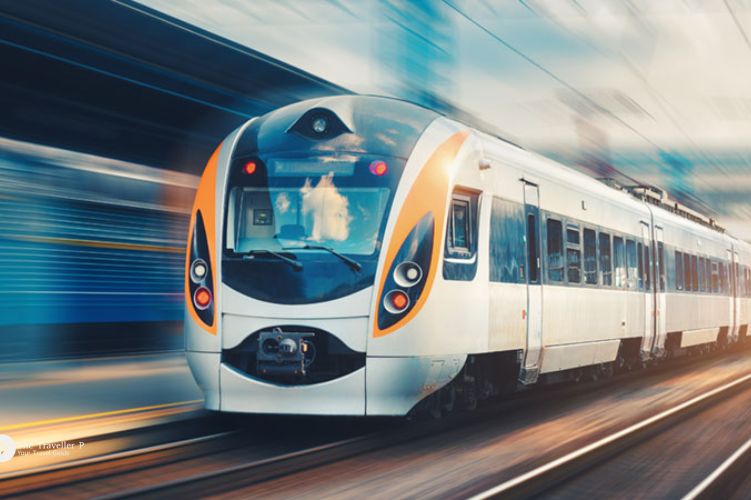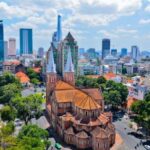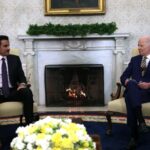I have lived in Mumbai for more than 15 years and have seen it change and grow in many ways. Our public transportation system on the ground is one thing that has not kept up with the times. There are roads and trains that link different parts of Mumbai, but the notorious traffic jams make getting around the city a nightmare. Read below about “Mumbai Metro Line 3 – Discover the Underground Adventure Everyone is Talking About”.
A metro train system that works well, moves quickly, and is comfortable has been needed for a long time. While Line 1 of the Mumbai Metro, which ran from Versova to Ghatkopar, was nice, it wasn’t enough to handle the needs of this huge, busy city.
Right now, Line 3 of the Mumbai Metro looks like it could completely change how people get around the city. I’ve been paying close attention to the progress of this 33.5 km underground metro line and have even been to a few building sites to get a sense of how big it is.
Table of Contents
Mumbai Metro Line 3 – Discover the Underground Adventure Everyone is Talking About
As someone who is interested in transportation and infrastructure, let me tell you why Mumbai Metro Line 3 is getting so much attention and how it will change the way people commute in the city.
An Engineering Marvel in the Making
Mumbai Metro Line 3, also known as the Colaba-Bandra-SEEPZ metro line, will connect two ends of Mumbai running underground. Some facts about this project:
- 33.5 km long making it the longest underground metro project in a single phase in India
- 26 underground stations planned between Colaba and SEEPZ with interesting names like Siddhivinayak, Dharavi, International Airport etc.
- Expected to carry 17 lakh passengers per day in 2021, reducing to 13 minutes from Cuffe Parade to BKC
- Tunnelling work uses advanced Earth Pressure Balance Tunnel Boring Machines (TBMs)
I have been to a few sites where the tunnelling work is underway and it is fascinating to see those giant TBMs in action. The tunneling happens deep underground, at a depth of 15 to 35 meters ensured using advanced GPS and laser guidance systems.
It is an engineering marvel in the making and once completed, will transform how lakhs of Mumbaikars travel avoiding the traffic above.
Convenience Personified for Mumbai Residents
As a frequent traveller within Mumbai, I often rely on Ola/Uber for completing my journeys. However, surge pricing and peak hour traffic can burn a hole in your pocket.
The Mumbai Metro Line 3 aims to resolve these pain points by connecting key residential and commercial areas of South and Central Mumbai quickly and efficiently.
Some of the key highlights:
- Connects Cuffe Parade business district to Bandra-Kurla business district within 13 minutes
- Interchange stations with suburban railways and existing Metro Line 1
- Feeder services to last mile connectivity through buses, autos and taxis
- Frequent services with 3-4 minutes frequency during peak hours
- Alternate transport option to congested roads above ground
With air-conditioned coaches, quick frequency and fixed fares, Mumbai Metro Line 3 will offer a comfortable, convenient and consistent commuting experience for over 30 lakh Mumbaikars.
Key Stations and Attractions to Explore
As an explorer, I am most excited by the stations I can access on the Metro Line 3 map. Most stations are strategically located close to key business districts, tourist attractions and commercial hubs.
Here are some of the prominent stations along with the attractions they connect to:
- Cuffe Parade – World Trade Center, offices
- Churchgate – Churchgate station, Marine Drive
- Chhatrapati Shivaji Maharaj Terminus (CSMT) – UNESCO site, heritage building
- Kalbadevi – Kalbadevi temple, market area
- Girgaon – Choupati beach
- Grant Road – Mumbai Zoo, Hanging Gardens
- Mumbai Central – Commercial hub
- Mahalaxmi – Mahalaxmi Racecourse
- Science Museum – Nehru Science Centre
- Acharya Atre Chowk – Phoenix Mills
- Worli – Worli Seaface promenade
- Siddhivinayak – Siddhivinayak Temple
- Dharavi – Asia’s largest slum, Dharavi
- Bandra Kurla Complex (BKC) – Commercial hub
- Vidhyanagari – Indian Institute of Technology (IIT)
- SEEPZ – SEEPZ export hub
The metro literally takes you on an underground adventure allowing you to hop-on and hop-off to explore Mumbai’s sights, attractions and landmarks.
Transforming the Commuting Experience
As a regular commuter who has braved Mumbai’s public transport system for years, I sincerely believe the Metro Line 3 will transform the lives of lakhs of citizens like myself.
Travelling from South Mumbai to the suburbs today by road can take anywhere from 60 to 120 minutes one way on an average day. The metro will cut this down to under 30 minutes including walking time to the metro station.
That’s half the time, twice the productivity and a comfortable air-conditioned ride. What’s not to like?
The reduced travel time allows people to reclaim their lives instead of being stuck in cabs, autos, buses or local trains. The underground metro also promises to be more consistent than the existing modes of transport.
As a woman commuter, safety and cleanliness are big factors for me. The Mumbai Metro Line 3 scores highly on both parameters with security personnel present at every station.
The other key benefit is air-conditioned comfort protecting you from heat, rains and pollution – things we Mumbaikars have learned to accept during our commutes.
Overall, the Metro Line 3 offers a reliable, efficient and high quality commuting experience that Mumbai has desperately needed.
The Game Changer Mumbai’s Mass Transit Needs
As an infrastructure projects enthusiast, I see the Mumbai Metro Line 3 becoming the backbone of Mumbai’s mass transit system in the future. It sets the benchmark for a world-class metro rail system that can serve as a blueprint for other cities as well.
The project has seen its fair share of challenges given its mammoth scale and scope. Land acquisition, cost escalations, time delays etc. have all impacted the progress. Yet, the construction work has been ongoing round the clock to meet the deadlines.
With 26 underground stations connecting two ends of South and Central Mumbai, the Line 3 finally offers a viable alternative to congested roads above.
I foresee the metro transforming commuting patterns in the city, reducing congestion and drive growth in business districts it connects.
The Possibilities Are Endless
Faster airport transfers, increased real estate development along the route, more women taking up jobs further away and even tourists now having a quick option to explore Mumbai’s sights.
As the city gears up for the metro launch in 2023, the buzz and anticipation is palpable. People can’t wait to hop on and explore Mumbai in a way not possible before. I hope you like reading “Mumbai Metro Line 3 – Discover the Underground Adventure Everyone is Talking About”.
After years of suffering crippling traffic, the Mumbai Metro Line 3 offers a glimmer of hope for Mumbaikars. I for one can’t wait for the underground adventure that will change how we commute forever!
Michaela Krajanova is an expert in travel journalism and blogging. With over 10 years of experience and a Master’s degree in Hospitality Management, Michaela Krajanova has cultivated a substantial following on Instagram, showcasing her travel photography and insights. Explore engaging travel guides and stories on her Instagram handle @michaela_krajanova, where she connects with a vibrant community of travel enthusiasts. Michaela’s work makes travel accessible and inspiring for readers around the globe, providing firsthand experiences and expert advice.





